Table of contents
Strawberries ( Fragaria ) contain a lot of vitamin C, even more than lemons. At first the wild strawberry ( Fragaria vesca ) was cultivated, but through accidental cross-breeding the garden strawberry ( Fragaria x ananassa ) was created.
Use in the kitchen
Fresh strawberries are an excellent healthy, low-calorie snack. They also taste delicious in muesli ( pea muesli ), in fruit salad, as a smoothie, as a cold mousse or in punch. As a cake topping or in ice cream, they not only look good, but also delight with their unique, fresh, fruity taste.
When cooked, strawberries are used as a puree (as a dessert sauce) or as a compote. There are also fruit cakes, tarts or tiramisu with strawberries.
Strawberries can be processed into strawberry jam. Due to their lower acidity and gelling ability, they are often mixed with red currants or rhubarb . Strawberries can also be found in rum sauce or as a liqueur.
In terms of taste, wild strawberries are far superior to garden strawberries and you can almost always use other strawberries in recipes instead of garden strawberries, especially wild strawberries.
Vegan recipe for smoothie with strawberries
Ingredients: 2 sticks of rhubarb, 1 banana, 200 g strawberries, 1 tablespoon of oat flakes and 1 tablespoon of ground nuts ( walnuts, hazelnuts or almonds ).
Preparation: Cut the washed and cleaned rhubarb into small pieces. Put these and all the other fresh ingredients (also chopped) together with the nuts and oat flakes in a high-performance blender or puree them with a hand blender to make a fine smoothie.
Vegan recipe for panna cotta with strawberry sauce
Ingredients: 2200 g strawberries, 50 ml almond milk, 200 ml coconut milk, 1 tbsp almond butter, 6 g agar-agar, a dash of real vanilla, 1-2 tbsp raw cane sugar .
Preparation: Put the almond milk, coconut milk and almond paste in a pot and carefully mix with agar-agar. Season to taste with a little real vanilla and whole cane sugar. Bring everything to the boil while stirring and simmer for 2-3 minutes. Then divide into 4 small glasses and refrigerate for a few hours. Meanwhile, puree the strawberries and sweeten as needed. Divide the strawberry sauce between 4 deep plates and carefully turn the panna cotta over them.
Vegan recipes with strawberries can be found under the note: " Recipes that have the most of this ingredient ".
| Not only vegans or vegetarians should read this: Vegans often eat unhealthily. Avoidable nutritional mistakes . |
Purchasing - Storage
Strawberries can be bought from major retailers such as Coop, Migros, Denner, Volg, Spar, Aldi, Lidl, Rewe, Edeka, Billa and Hofer almost all year round. In northern Central Europe, strawberries are in season from May to the end of July, and only then are they really fresh and from the region. There are also areas where you can pick fresh strawberries directly from the field.
Organic strawberries are less allergenic than strawberries from conventional cultivation and integrated plant protection. According to European law, the use of pesticides and synthetic fertilizers in organic farming is completely prohibited. 32 organic supermarkets (such as Denn's Biomarkt and Alnatura ) have strawberries in organic quality.
Outside of the season, garden strawberries usually come to Northern Europe from southern Spain, France, Israel, Egypt or from overseas and have long transport routes behind them.
Strawberries are rarely available as canned or frozen fruit. On the other hand, you can often find freeze-dried strawberries (lyophilized or sublimation dried) in health food stores and organic shops. These are ideal for muesli in winter - as are freeze-driedraspberries andblueberries .
The availability of strawberries varies depending on the size of the store, catchment area, etc. You can find our recorded food prices for the DA-CH countries above under the ingredient image - and by clicking you can see their development at different suppliers.
Found in the wild
The wild strawberry ( Fragaria vesca ) is not a wild form of the garden strawberry. However, it can be found in the wild in large parts of Europe and northern Asia, especially in light deciduous and coniferous forests and on forest edges and on grassland. 4
Storage tips
Strawberries are particularly sensitive to pressure. They spoil easily and are very susceptible to mold. 25 When transporting them, it is important that the strawberries are not placed too close together.
How long do strawberries last? Stored at room temperature, freshly picked strawberries only last for one day. They are not climacteric, so they do not ripen further. Water removes the aroma from the fruit, which is why you should only wash them briefly immediately before eating them. If stored correctly, strawberries can last up to two days in the refrigerator.
How do you store strawberries? You should store them unwashed in the vegetable compartment of the refrigerator, preferably in a large sieve. If you put the strawberries on a plate with kitchen paper, this will absorb the remaining moisture and prevent mold from quickly forming. 25
Can you freeze strawberries? If you want to have aromatic strawberries on hand in winter for a strawberry sauce or smoothies, you can wash and pat dry the fruit and freeze it. However, they are no longer suitable for fresh consumption as they are very mushy after defrosting. 25
Ingredients - Nutritional values - Calories
Strawberries have a very low energy value of 32 kcal/100g. They consist of 91% water and contain practically no fat and very little protein. 5
However, their water, vitamin and mineral content is very high. Strawberries have even more vitamin C than lemons for the same weight. The amount of ascorbic acid in strawberries is 59 mg and that in lemons 53 mg/100g. Acerola cherries have extremely high levels (1680 mg). Sea buckthorn berries (450 mg/100g) are also very rich in vitamin C. 5 Watch our video about vitamin C.
With 0.39 mg of manganese per 100 g, strawberries have a respectable content for a fruit. The manganese content ofblueberries (0.34 mg/100g) and sea buckthorn berries (0.6 mg) is in a similar range to that of strawberries. The trace element is mainly found in the germs and outer layers of grains - but nuts and seeds also contain a lot of it. Wheat germ has 13 mg, hazelnuts 6.2 mg andpumpkin seeds 4.5 mg/100g. 5
Strawberries contain 24 µg/100g of folic acid . Hokkaido pumpkin and zucchini contain just as much. The precursor of folic acid, folate, is found mainly in pulses, e.g. mung beans (625 µg/100g) and chickpeas (557 µg/100g). Lupine flour is also a good source of folate, with 188 µg/100g. 5 Folate is very sensitive to light and heat and reacts with oxygen. 27 If prepared incorrectly, losses can be as high as 90%. 5 According to EU regulations (2011), the daily requirement is 200 µg. 23 Adolescents and adults should consume around 400 µg daily through their diet. Folic acid is necessary for cell growth, protein metabolism and the development of the fetus. An increased requirement (600 µg) must be taken into account before and during pregnancy. 6
You can find all the ingredients of strawberries, how much they cover your daily needs and how they compare with other ingredients in our nutrient tables. In the article Nutrients comprehensively explained you will get a detailed insight into the topic.
Effects on health
How healthy are strawberries? Strawberries are very healthy for the human immune system due to their high vitamin C content. The antioxidant effect of ascorbic acid binds free radicals, which protects the body's cells from damage. It also protects the skin and counteracts the aging process. 7
Berries and wild berries usually have an optimal ratio between LA (linoleic acid) and ALA (alpha-linolenic acid) . In general, berries have a low fat content and accordingly the amounts of omega-3 and omega-6 are low. In relation to the total fat content, however, the polyunsaturated fatty acids make up a high proportion. 5 The national health authorities recommend a ratio of around 4:1. 21
The body uses alpha-linolenic acid to produce other omega-3 fatty acids (EPA and DHA), which have an anti-inflammatory effect, while linoleic acid is used to produce the pro-inflammatory arachidonic acid (AA). 21 The good ratio of omega-6 to omega-3 is another reason why the berries are considered a very healthy food.
Regular consumption of strawberries lowers blood pressure and reduces the risk of heart disease. 10
Secondary plant substances
Many of the health effects of strawberries can be attributed to the secondary plant substances they contain. Our article on secondary plant substances provides an overview of the classification of substance groups, their occurrence in foods and possible effects on humans. Strawberries contain the following secondary plant substances, among others: 11
- Polyphenols : flavonoids (flavonols, flavanols), phenolic acids (hydroxycinnamic acids), anthocyanins, tannins
Strawberries contain a lot of secondary plant substances that have anti-inflammatory and anti-carcinogenic effects. 12 The growth-inhibiting mechanisms against cancer cells were observed primarily in the polyphenol ellagic acid. 11
Red fruits contain many anthocyanins (plant pigments); strawberries contain more than 25 different ones. 8 Anthocyanins also have an antioxidant effect in the body. They protect body cells and DNA from oxidative stress. 9
However, it should be noted that the composition of secondary plant substances in strawberries can vary depending on post-harvest processing, such as pressing, pasteurization, conventional drying and vacuum drying. 10 Therefore, quantities are only of limited use and should only be understood roughly.
Dangers - Intolerances - Side effects
Are strawberries dangerous? The risk of an allergic reaction to strawberries is low. Strawberries contain seven allergenic proteins. The main allergen in garden strawberries is the same as the main allergen in birch pollen Bet v 1. This is currently the dominant allergen in Europe. Profilin is the second allergen that most often causes reactions, especially in the Mediterranean region. People who are sensitive to these allergens should avoid consuming strawberries in their diet. 32
The production method can also increase intolerances due to pesticides. Pesticides are used in conventional production systems and in integrated plant protection. 32 According to the Pesticide Atlas, multiple residues of pesticides and pollutants were found on 98% of strawberries in Germany in 2019. 13
Risk of confusion(s)
The wild strawberry is most likely to be confused with the Indian mock strawberry ( Potentilla indica ). The fruit looks similar, but the flowers are not white-yellow, but just yellow. It is edible, but has very little taste. 25
The musk strawberry ( Fragaria moschata ) has slightly larger fruits. It is also called cinnamon strawberry, muscat strawberry or muscatel strawberry. The flowers are very similar to those of the garden strawberry we know. The fruit can be a similar red to brownish color. This strawberry was found in many gardens until the 19th century. Its taste is compared to the "muscat" taste of some grape varieties. 16
Folk medicine - natural healing
In traditional remedies, wild strawberries are used as a laxative for stomach and intestinal complaints. They also have a diuretic effect. 4
Ecological footprint - animal welfare
The ecological footprint of a food depends on various factors. The type of agricultural production (conventional vs. organic), seasonal, regional or domestic production or import by truck, ship or plane, different types of packaging and whether the goods are fresh or frozen all play a decisive role. 28
In Europe, according to CarbonCloud, strawberries have a carbon footprint of 0.28 kg CO 2 eq/kg. 31 Frozen strawberries and freeze-dried strawberries from Poland have 0.33 kg CO 2 eq/kg and 19.7 kg CO 2 eq/kg, respectively. 31 This clearly shows how much impact food processing and transport can have.
For comparison, vegetables, one of the most climate-friendly foods, have a carbon footprint of around 0.1-0.5 kg CO 2 eq/kg depending on the cultivation method (and excluding the impact of transport). 29 The average carbon footprint of plant-based foods is around 0.66 kg CO 2 eq/kg, which represents only 10.7% of the carbon emissions of animal products (6.15 kg CO 2 eq/kg). 30 To keep your carbon footprint small, it is best to eliminate animal products from your diet.
The water footprint of strawberries totals 347 l/kg, which is comparable toraspberries or cucumbers . The largest part of this is so-called 'green water'. The green water footprint indicates the amount of rainwater used in production. At 322 l/kg, the global average water consumption for vegetables is relatively low. 20
In general, fresh, unpackaged, seasonal and regional vegetables have the lowest emissions. The more a food is processed, the worse its ecological footprint.
For detailed explanations of various sustainability indicators (such as ecological footprint, CO2 footprint, water footprint), see our article: What does the ecological footprint mean?
Animal welfare - species protection
Strawberry crops in the field offer bees and wild bees a rich supply of nectar. In addition, pollination of the strawberries by insects ensures larger fruits and better yields. Through more uniform pollination, the plants produce more of the phytohormone auxin, which is involved in many growth and development processes of plants. 17
Worldwide occurrence - cultivation
Cultivated varieties of wild strawberries can be dated back to the 14th century. However, the small fruits make harvesting rather laborious. 22 The wild strawberry ( Fragaria vesca ) is also known as the strawberry of the month. 25
The garden strawberry with its larger fruits has been cultivated since the 18th century. It is also called the pineapple strawberry or cultivated strawberry ( Fragaria x ananassa ). It is the result of a cross between the American strawberry species of the Chilean strawberry ( Fragaria chiloensis ) and the scarlet strawberry ( Fragaria virginiana ). 4 The Chilean strawberry is found on the North and South American Pacific coast. The scarlet strawberry is native to North America. There it grows in temperate climates, e.g. in open forests and forest clearings. 21 Today there are many different varieties of garden strawberry, which are used depending on the region.
The name pineapple strawberry was the original name for the cultivated strawberry we know today (garden strawberry). In fact, this is a separate variety. 4.25 A virus-resistant clone of the "white pineapple" variety of garden strawberry was sold as a pineberry. 24 These fruits are whitish, the nuts are red. Their aroma is reminiscent of a pineapple. This variety has been known since the 18th century, but it is not widely cultivated. 18.25
There are also cultivated hybrids of the wild strawberry and garden strawberry species: Fragaria x vescana (Vescana varieties). 3
According to the FAO, China, the USA, Mexico, Egypt, Turkey and Spain had the largest harvests in 2022. 14
Growing in the garden
How do strawberries grow best? Strawberries love full sun. The soil should be loose and rich in humus, whether in the field, in the bed or in a pot. If you have rather heavy soil, you can mix in some sand. Strawberries like it moist, but do not tolerate waterlogging. 15
To avoid soil pests, an interval of 4 years should be observed. Fabaceae such as peas or beans are suitable as pre-crops. Green plants are usually planted in late summer. "Frigo plants" can be planted from April to July. This means that the first harvest can still take place in the year of planting. 15
For garden strawberries, propagation via cuttings has proven to be effective. 15 These can be cut off with a spade and planted in the new bed.
The best time to sow seeds is between February and March. The soil should only cover the seeds slightly, as most varieties germinate in light. The germination temperature should not fall below 16 °C. It takes about 10 weeks for the strawberry seeds to germinate. 25 When the plants are 2-3 cm high, they can be separated and later planted outdoors.
You should water the strawberries frequently for 2-3 weeks after planting, then fertilize in August or September after the harvest. Organic fertilizer or mature compost is a good option. Lupins, crimson clover, barley, oats, buckwheat or bee-friendly can be used as organic fertilizer. Onions protect the strawberry plants from fungal diseases, for example. To keep the weed pressure a little lower, you can put straw under the plants. This also helps against gray mold infestation. 15.25
How do you harvest strawberries? The time of harvest depends on the variety. Some strawberries bear fruit all year round. 25 The aroma of the fruit is most intense early in the morning. When harvesting, the leaf ring should remain on the strawberry. Otherwise, water will penetrate this opening when washing and dilute its taste.
Further information
The strawberry genus ( Fragaria ) belongs to the rose family (Rosaceae). There are around 20 species and many subspecies, hybrids and numerous cultivated varieties. 21
Garden strawberries have long stems, called runners, on which they spread. They consist of three small green leaves with jagged edges. The flowers are small, white and have a yellow center. After pollination, the flowers turn into the red fruits. The scientific name Fragaria refers to the distinctive smell of the fruits. The flowers appear in spring. 4 Although similar to wild strawberries, they have smaller fruits and a lower yield. Therefore, they are not suitable for commercial production and sale. 4
Is the strawberry a nut? From a botanical point of view, the strawberry is an aggregate fruit or aggregate nut fruit. Sometimes it is also referred to as an aggregate achene fruit (Achenecetum). The fruit that we call a berry is actually the fruit base, i.e. an achene. The actual fruit is the small, usually green grains on the surface. 1,2 It is similar withraspberries and blackberries, but they are aggregate stone fruits (Drupecetum).
Alternative names
The garden strawberry is also called the pineapple strawberry or cultivated strawberry. The wild strawberry is also called the monthly strawberry or bush strawberry. 25
There are many common German names for strawberries: Aardbeeren, Aelberte, Albeere, Arbern, Arpel, Baschierper, rote Besinge, Büschierpern, Ebbeere, Eberi, Ebern, Erbeern, Eerbier, Elberken, Erbel, Erbeer, Erber, Erbere, Erbern, Erbir, Erbirbaum, Erdbeeri, Erdberenboem, Erdbese, Erdbiere, Erdebeeren, Erpber, Erpeln, Erper, Erpern, Erperstaud, Erpher, Erpir, Erpern, Errberkraut, Erthebere, Grasbiel, Haarbeere, Ihrbär, Knickbeeren, Lastbeere, Majuse, Preschtling, Roaper, Ropperen, Rotber, Rotbere, Rotpir and Rothbeere. 19
In English, the garden strawberry is called strawberry, the wild strawberry is called wild strawberry, woodland strawberry, Alpine strawberry, Carpathian strawberry, European strawberry or fraisier des bois.
Bibliography - 30 Sources
| 1. | Hanelt P, Helm J, Kruse J. Urania Pflanzenreich. Blütenpflanzen 1. Urania Verlag: Leipzig/Jena/Berlin. 1993. |
| 2. | Simpson MG. Plant Systematics. Academic Press. 2006. |
| 3. | Hoberg E, Ulrich D, Schimmelpfeng H. Flavour quality of a new strawberry population. Acta Horticulturae. 2000;538:447-452. |
| 4. | Royal Botanic Gardens, Kew. Wild Strawberry (Fragaria vesca); Garden Strawberry (Fragaria x ananassa); Fragaria L. |
| 5. | USDA United States Department of Agriculture. |
| 6. | NIH Office of dietary supplements. Folate. 2022. |
| 7. | Wintergerst ES, Maggini S, Hornig DH. Immune-enhancing role of vitamin C and zinc and effect on clinical conditions. Ann Nutr Metab. 2006;50(2):85-94. |
| 8. | Lopes da Silva F, Escribano-Bailón MT et al. Anthocyanin pigments in strawberry. LWT - Food Science and Technology. 2007;40(2):374-382. |
| 9. | Tulipani S, Alvarez-Suarez JM et al. Strawberry consumption improves plasma antioxidant status and erythrocyte resistance to oxidative haemolysis in humans. Food Chem. 2011;128(1):180-186. |
| 10. | Basu A, Rhone M, Lyons TJ. Berries: emerging impact on cardiovascular health. Nutr Rev. 2010;68(3):168-177. |
| 11. | Aaby K, Ekeberg D, Skrede G. Characterization of phenolic compounds in strawberry (Fragaria x ananassa) fruits by different HPLC detectors and contribution of individual compounds to total antioxidant capacity. J Agric Food CHem. 2007;55(11):4395-4406. |
| 12. | Reuter S, Gupta SC et al. Oxidative stress, inflammation, and cancer: how are they linked? Free Radic Biol Med. 2010;49(11):1603-1616. |
| 13. | Heinrich Böll Stiftung, Public Eye. Pestizidatlas: Daten und Fakten zu Giften in der Landwirtschaft. 2022. |
| 14. | Faostat. Crops and livestock products. Strawberries. 2023. |
| 15. | Plantura Garden. Erdbeeren pflanzen: Wann, wo & gute Nachbarn. 2018. |
| 16. | Wachsmuth B. Von Monats-, Wald- und Moschuserdbeeren. Gartenpraxis. Band 35(4). 2009. |
| 17. | Pflanzenforschung.de Bessere Früchte durch Insektenbestäubung. 2018. |
| 19. | Pritzel GA, Jessen C. Die deutschen Volksnamen der Pflanzen. Neuer Beitrag zum deutschen Sprachschatze. Philipp Cohen: Hannover, 1882. |
| 20. | Mekonnen MM, Hoekstra AY. The green, blue and grey water footprint of crops and derived crop products. Hydrol Earth Syst Sci. 2011;15(5):1577–1600. |
| 21. | Ander BP, Dupasquier CM, Prociuk MA, Pierce GN. Polyunsaturated fatty acids and their effects on cardiovascular disease. Exp Clin Cardiol. 2003;8(4):164–172. |
| 22. | Grubinger V. History of the Strawberry. The University of Vermont. 2012 |
| 23. | Amtsblatt der Europäischen Union. Verordnung (EU) Nr. 1169/2011 des Europäischen Parlaments und des Rates vom 25. Oktober 2011 betreffend die Information der Verbraucher über Lebensmittel. |
| 24. | Merrick JM. The strawberry, and its culture: with a descriptive catalogue of all known varieties [Internet]. Boston: J. E. Tilton and company; 1870. |
| 25. | Mein schöner Garten: Schmidt V, Siemens F, Monning E. Erdbeeren. |
| 27. | Wusigale, Liang L. Folates: Stability and interaction with biological molecules. Journal of Agriculture and Food Research. 2020 Dec;2:100039. |
| 28. | Reinhardt G, Gärtner S, Wagner T. Ökologische Fussabdrücke von Lebensmitteln und Gerichten in Deutschland. Institut für Energie- und Umweltforschung Heidelberg ifeu. 2020:1-22. |
| 29. | Pereira B de J, Cecílio Filho AB, La Scala N. Greenhouse gas emissions and carbon footprint of cucumber, tomato and lettuce production using two cropping systems. Journal of Cleaner Production. 2021;282:124517. |
| 30. | Feng S, Lakshmanan P et al. A comprehensive continental-scale analysis of carbon footprint of food production: Comparing continents around the world. Journal of Cleaner Production. 2023;426:138939. |
| 31. | Carboncloud. Strawberries Europe; Strawberries frozen Poland; Straberries freeze-dried Poland. 2024 |
| 32. | Aninowski M, Kazimierczak R et al. Evaluation of the potential allergenicity of strawberries in response to different farming practices. Metabolites. 2020;10(3):102. |

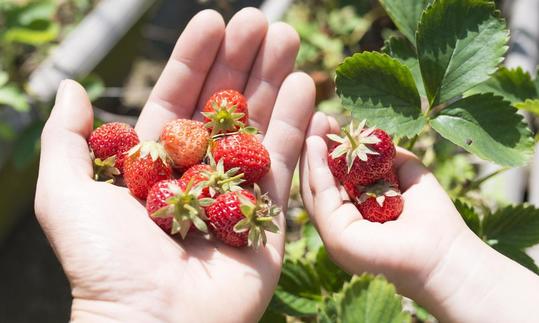

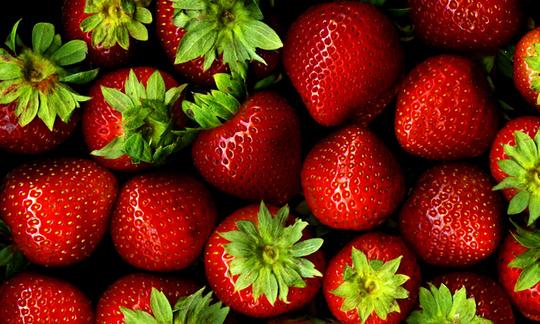

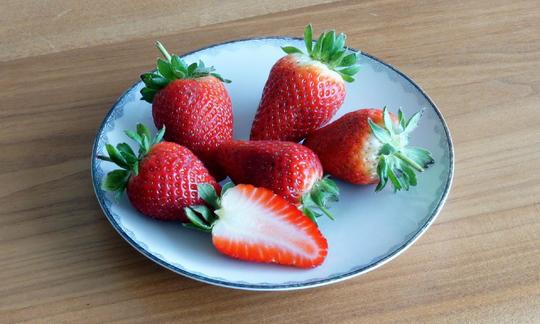

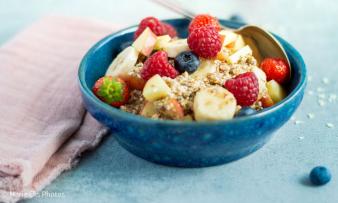
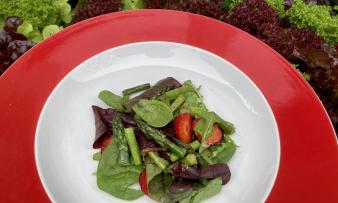
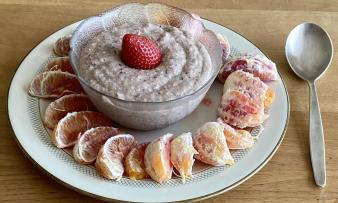





Comments